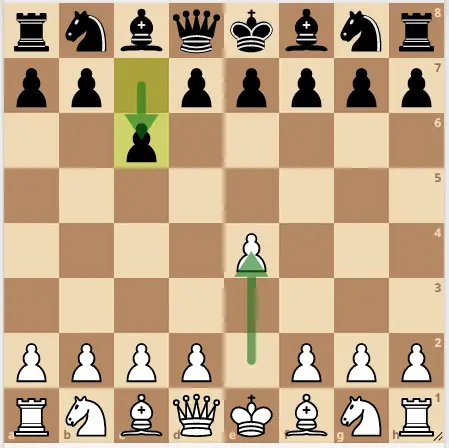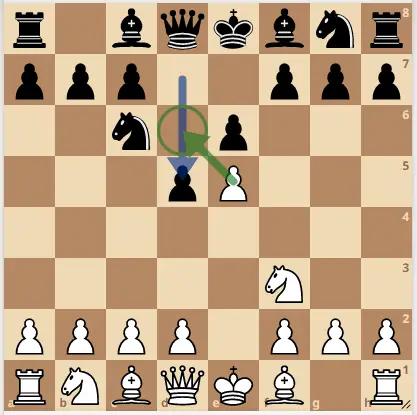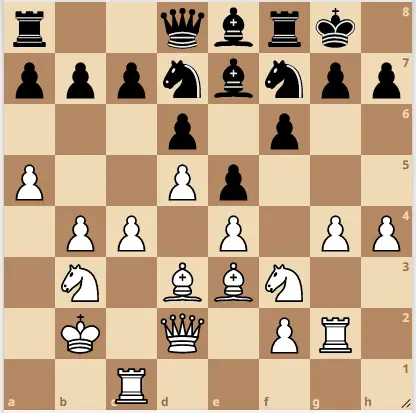Learning how the pieces move is the first step to mastering the game of chess. One chess piece that many beginner players are taught first is the pawn. There are 16 pawns in total at the starting position of a chess game, with each player having 8 pawns.
The pawns start on the 2nd rank for white and the 7th rank for black. They are also known as soldiers or footmen.

In this article, we will discuss the number of spaces a pawn can move and the number of squares it controls over the board. You’ll also learn the 2 special moves of the pawn, so be sure to stick around. Here is what you should know.
How Many Spaces Can A Pawn Move?
A pawn can only move one space forward or 2 spaces forward on its first move. The more space or squares a piece controls over the board is the more powerful it is. Pawns control the least number of squares on the board. Therefore, they are considered the weakest piece in chess.
Nevertheless, without the pawns there would be no chess game. Pawns are the soul of the chess game as they help to decide the nature and characteristics of the position. The pawns determine if the position is opened or remain closed. They defend important squares around the king and help to keep the king safe from attacks.
A pawn only moves one space at a time or 2 spaces on its first move

The value of a pawn is worth 1 point due to the few number of spaces it controls on the chess board. Chess piece like the queen can move any number of spaces in any direction and is given a point value of 9. Therefore, the point value of each chess piece is determined by the number of spaces it can move to.
Number of Spaces a Pawn Controls on the Chess Board
The number of space or squares a pawn controls is 2. This is because pawns only capture one square diagonally forward to the left or right.
Pawns capture one square diagonally to the left or right as shown by the green arrows

In the position above, white just played the move pawn to d4. The pawn on d4 controls the c5 square and e5 square. In total, the pawn controls 2 spaces on the chess board.
Note that the pawn does NOT control the d5 square in front of it. This means if one of black’s pieces was to occupy the d5 square, white’s d pawn could not capture it.
For example, in the position below, white cannot capture black’s pawn on d5 even though pawns move forward. This is called a blockade.
Both pawns blockade each other. They cannot advance further.

Though the pawn can advance one square forward, it is the only piece that does not capture a piece in the same way it moves. In other words, a pawn does not capture a piece by moving one square forward. It can only capture one square diagonally to the left or right.
In this position of the well known Queen’s Gambit opening, white just played the move pawn to c4. Black can accept the gambit by capturing the pawn. This would transpose into the Queen’s Gambit Accepted.

En Passant: A Special Pawn Move
En passant is a special pawn move that prevents an opposing pawn from evading capture. If your opponent’s pawn advances 2 squares forward from its starting position and lands beside your pawn, you can capture it by moving your pawn one square diagonally to the square that the enemy pawn passed over as though the latter had been moved only one square.
This move can only be done immediately following the advance of the enemy pawn and is illegal on any other turn after that.
In the position below, black just advanced his d pawn 2 squares forward to d5. The pawn lands beside white’s e5 pawn. Therefore, white’s e5 pawn can capture black’s d5 pawn via en passant
Before en passant

After en passant

Apart from evading capture, en passant also prevents the position from getting locked up. When the center is locked up by pawns, there is not much progress to be made and the game could end in a draw. En passant stops this from happening, giving players the option to keep the position closed or to open it up.
For more information on en passant, see article: Is en passant forced?
Promotion: Another Special Pawn Move
Though pawns move the least number of spaces on the chess board, they are no doubt short of special moves. Promotion is another special move that grants a pawn the ability to be exchanged for another piece of higher value once it journeys to the other side of the board (the last rank).
Indeed, a pawn can promote to a queen, bishop, rook or knight if it arrives to the 8th rank for white or the 1st rank for black. This promotion square is also referred to as the queening square as most players promote their pawn to a queen since it is the most powerful piece on the chess board.
Pawn promotes to a queen

Pawn promotion usually occurs in the endgame and is often the deciding factor. In many cases, the player who successfully promotes his pawn into a queen gains a tremendous advantage in material to checkmate the opposing king.
Therefore, one of the main goals in the endgame is to push your passed pawn to the last rank and promote it to a queen. The king and queen duo usually provides enough force to checkmate the enemy king.
For more information on how to checkmate with a queen and king, see article: How to win chess with only a queen?
How To Gain Space on The Chess Board With Your Pawns?
Gaining space is an important strategic element in a chess game. Every grandmaster strive to gain space on both sides of the chess board, including the center. This is because gaining space increases the acitivity of your pieces while reducing the activity of your opponent’s pieces.
The player with the larger spatial advantage has more room for his pieces to move about freely, whereas the player with the less space struggles to find active squares for his pieces.
There are three ways to gain space on the chess board:
- Gain space on the kingside
- Gain space on the queenside
- Gain space in the center
Every chess player should strive to gain space on all 3 sections of the chess board in order to achieve dominancy.
The best way to gain space is to move your pawns up the board as far into enemy territory. Pushing your pawns up the board clears away squares in your half of the board and controls squares in your opponent’s half of the board, thereby restricting his mobility.
In the position below, white has a spatial advantage in the center and on both flanks of the chess board. Black is very passive and cannot make any progress whatsoever.

In fact, white is already winning here due to the number of space he controls on the chess board. White can play Rcg1 to prepare a timely pawn break with the move g5.
All in all, one of the main strategic goals in chess is to gain space on the chess board. By pushing your pawns up the board, you’ll slowly gain control over the chess board.
Can A Pawn Move Backwards?
A pawn is the only piece on the chess board that cannot move backwards. The king, queen, bishop, rook and knight all can move backwards in their own unique way. For example, the bishop can move diagonally backwards, while the knight can move backwards in a L-shape manner.
Pawns only move one space forward, thus it’s illegal to move your pawn backwards. Because pawns can never move backwards, you should be careful how you push them.
Whenever you push a pawn forward, it loses control over the square it was protecting. This creates what is known as a weak square.
In the position below, black created a weak square on d5 when he advanced his pawn to e5. Black is now left with a backward d6 pawn on the open d-file. The d6 pawn cannot be protected by another pawn nor can black move his e5 pawn backward to protect over this weakness.
pushing pawns can create weaknesses

Another mistake that players make is overextending their pawns. While it is good to grab space on the chess board, you should be careful not to overextend them, as pawns can become targets of attack later in the game. Make sure that your opponent cannot attack your pawns whenever you push them up the board to gain space.
Final Verdict
In summary, pawns move one space forward or 2 spaces forward on their first move. A pawn controls only 2 squares; that is, the squares diagonally left and right of the pawn.
When it comes to gaining space on the chess board, the pawns are the most ideal pieces for the job. By pushing your pawns up the board, you increase the amount of room for your pieces while decreasing the mobility of your opponent’s pieces.


